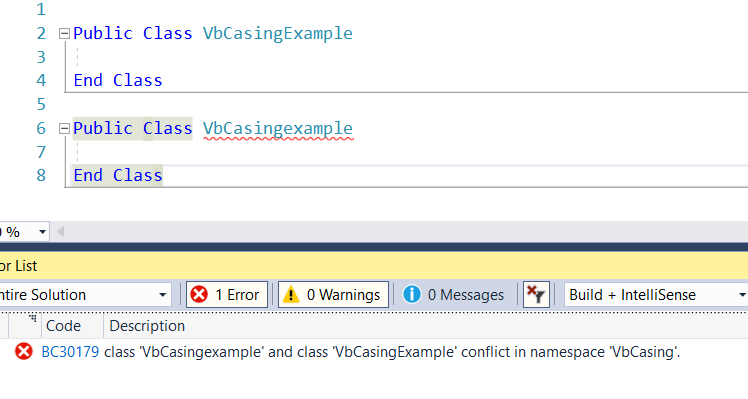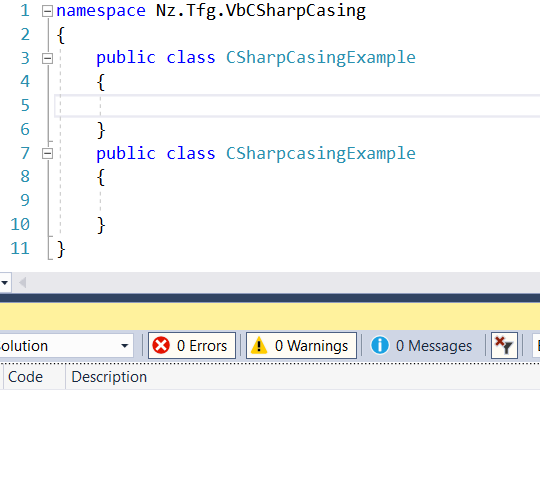What is the role of Heritage New Zealand?
Over the past decade, Heritage NZ has gained a reputation in Wellington as a group that would rather see a city die than consider even the smallest of alteration. When talking to friends and family there is a sense of heritage being important in spite of what Heritage NZ is doing.
What is heritage?
Plenty of dictionary definitions exist for the term heritage. Wiktionary, Merriam-Webster, Cambridge, etc. All refer to a concept of something inherited from a predecessor, a bithright.
In digging through Heritage NZ's website I found statement after statement saying that heritage must be preserved or maintained as it is important. Yet very little could be found defining what it was. Heritage New Zealand - About Us
Sections 2 and 3 of Historic Heritage Principles and Issues give definitions so large almost anything existing could be considered heritage. "Contributes to an understanding and appreciation of New Zealand’s history and cultures." is repeated in several places without giving any guidance as to where it stops. Centennial Highway without rope barriers contributes to an understanding of New Zealand's history of road safety. Auckland Airport's open air path between terminals contributes to an understanding of New Zealand's aerial connections to the outside world. Grafton Gully in Auckland contributes to an understanding and appreciation of the lengths we will go to to build motorways through the middle of a city. And the Wellington Motorway through Tinakori contributes to an understanding and appreciation of how our predecessors would happily bulldoze through poor neighbourhoods.
All these things are heritage to someone. But you would only find a few voices that would want to keep them and almost none that would want to stop them from ever changing. However the documents put out by Heritage NZ are always talking about preserving and stopping. It seems that in the mind of Heritage NZ, heritage is the stopping of time. It is the encasing of a thing in amber and never letting it change in any form.
With this working definition of heritage where does heritage start or stop? Should we move everyone out of Wellington so it will never change? What about the place where the people moved to? That will destroy the heritage of that area. Should we level all buildings in Wellington and restore it to what it was in the 1800s? Why not earlier? Why not before any humans came to these islands.
Clearly these are silly suggestions. But nothing I could find described where this limit was for heritage. It was only ever about stopping, about preserving. For who? Why?
So, what do I think is heritage?
Given the above doesn't make much sense you might think I would propose that heritage is useless. That is far from the case. While I strongly disagree with the actions of Heritage NZ, I can list off hundreds of things I think should be retained in some form. Things that need protection from total destruction and erasure from history. Yet I also think that these things should not be frozen in time. Instead being allowed to change with guidance. But I was unable to identify a reasoning of why. Why did I think some things need protection? Why did I think that these things should be allowed to change? Why would I choose some things to protect and ignore others?
It bugged me. I should be able to describe a structure to why I thought this. So I set myself the goal of assembling my own definition of heritage. To take the dictionary definitions, the copius documents from Heritage NZ, a collection of things I think are worth protecting, and just as importantly a collection of things I think are not worth protecting.
After a while of thinking. Coming up with various definitions and guiding frameworks. And throwing out one after the other as they would include or exclude important things. I came up and refined the following.
Heritage is the use of objects, physical or ephemeral, to communicate wanted history and lessons to our successors.
So what in overly broad bollocks does that mean?
Heritage is a thing. It can be a physical thing such as a piece of paper or location. It can also be something ephemeral like a story or legend. But heritage is not just a thing. Heritage is what that thing represents, a moment in history. Heritage is a way for us to connect the now with the past. It is a totem to help establish an emotional connection to who went before.
Heritage is also more than that. Heritage evolves and changes. Buildings are changed as their surroundings are changed. Once standing proud in an area they can be shrunk by the progression of time as new things rise up over them. An object that originally represented something our predecessors were proud of can become a warning or even something to be ashamed of. As our knowledge, understanding, and ethics change. A thing that survived in spite of our predecessors belief that it had no value can become a cruicial piece of heritage to connect ourselves with the past.
Heritage is a way for us to connect with the past. It is a way for us to communicate with the future. It is a way for us to identify to our successors the things that we believe they should remember and learn from.
Heritage can be represented by more than the original protons, electrons, neutrons, and quarks that it was. It is continued through stories, legends, and the memories of those that come after.
Heritage is not about freezing something in time. It is not about turning a city or culture into a museum that can never change. It is not some list that only ever grows and can never be changed. It is not tied into the atoms that first came together at the moment of time we decide was important.
Does Heritage NZ serve a role with this definition?
All of the above still requires the hard work and effort of a body such as Heritage NZ to oversee. It requires a group of people who can dedicate their time to communicate the core values of heritage, why it is important to remember and then communicate these stories to our successors. It requires a group of people who can spend time researching how best to retain the core of these messages for future generations.
I believe that Heritage NZ needs their aims clarified so that their role is communicated as a supporter of heritage and not an indescriminate killer of change. I want to see Heritage NZ provided with the funding to commission research and development of tools and technologies to restore and maintain the heritage we choose.
I want to see Heritage NZ have their actions refined and focused by capping the number of places that can be protected at the highest level. As part of this I also want to see that Heritage NZ get the funding needed to cover the costs of restoration and maintenance of these places. Not leaving it up to the whims and unfunded expectations of private owners. As a group we decide that these places need to be protected. We need to show this by providing the funding to do it.
I would adjust Heritage NZ's guidance to make it clear that safety and accessibility take precedence over purity. If a structure needs major changes or replacemant of large sections to make it accessible for all kiwis? Then it gets done. With efforts to make the design sympathetic to the existing heritage we want to highlight.
Are there examples elsewhere that we could adopt and evolve for our needs?
We are not the first country to go through this problem. Many places around the world can trace their heritage of a location back thousands of years or more. Have they come up with any approaches that we could look at adopting?
In 1866, English Heritage started the blue plaque scheme in London. Since then it has inspired the creation of similar schemes to cover the entire UK and similar schemes have been adopted elsewhere Blue Plaque Scheme. To summarazie, on buildings and locations that are tied to events or people that are important to the heritage of the UK, a metal plaque with blue enamel is affixed at the location. On this plaque the person and/or event is described. From the building containing the office in which Penicillian was first identified, to the pub where the Beatles had their first paid gig. These plaques can be found all over the UK, highlighting the knowledge that the community wants to pass on to their descendents.
Private companies have also done things to highlight items and events they feel is a part of their heritage. The crane manufacturer Libherr discovered that a crane of the model that set them onto the path of becoming a world leader in cranes, was still in use nearby about 40 years later. Not only was it of this model, it was the very first to be built. The company aquired the crane back from the operator. And then it went about restoring the machine into near new condition. To Heritage NZ this would be impossible as components were replaced with no real way to rollback the repairs. Yet at the end they had this object back to an almost new condition. Where it represents the history and heritage of all those that have worked to design and build these machines. It is ok to make permanent changes or replacements if it is done with consideration and the aim of maintaining the whole for the future. Liebherr Crane Restoration
Railway stations are full of examples where they have been majorly modified without losing the core identity of the location. St Pancras in London had the main platform area demolished during restoration. With shopping and international rail facilities placed in the original freight level and a new platform area being built for the Eurostar trains to Paris and Brussels. King's Cross station in London had a huge roof installed that turned an outside area into more internal space for shops and travellers. And Britomart in Auckland had floors demolished to provide access to the underground platforms. Each of these stations is know and recognized for the history and heritage that the original buildings represent. But that heritage value has not been used to stop any changes from being allowed. If anything, these huge changes have helped build even more heritage recognition into these places. As locations of history, of people, of stories and lessons learnt.
How can this be applied to Wellington in particular and Aotearoa New Zealand in general?
In Wellington this way of defining heritage would free up our ability to make our environment safer without being tied into a near impossible standard.
For Wellington Railway Station it would open up the ability to make accessibility into all areas a requirement. Replacing the steps with gradual ramps. Replacing the platform canopies with a full width and length canopy that covers all platforms.
For the Gordon Wilson Flats it would allow us to rebuild them with modern materials and engineering knowledge. Creating warm and safe living spaces that will build new heritage on top of the original. Evolving the heritage of the place.
With Wellington Central Library it would open up the option to build something new with current best practices for public spaces. While retaining the elements that are iconic to Athfield Architects.
We could use plaques around the country to identify the locations where important events occured that we want our descendents to remember. What exists near the old location of Athletic Park in Wellington to recognize the Springbok Tour protests? What of the small locations where events that progressed the freedom of queer communities? How can we find the places that sufferagetes made the core decisions that ended in the right to vote being expanded?
This way of thinking would create new ways of recognizing the heritage of areas without having to encase things in amber.
Heritage is important. It must live alongside the present and future without losing that connection to the past.
Heritage is important. It is vital. Heritage is the stories, the lessons, the emotions, that we tie to a place or object. It exists for us to connect with our ancestors, to learn from their mistakes and celebrate their successes. It exists to pass this knowledge on to our descendents. So that they learn from and of those that went before them.
We must not let this idea that heritage is an enemy of those that live now. Or we will fail to pass things on to our successors. Heritage helps us understand not just who we are, but how we got here. It must not be used to stop us from changing into something better.






















































































































